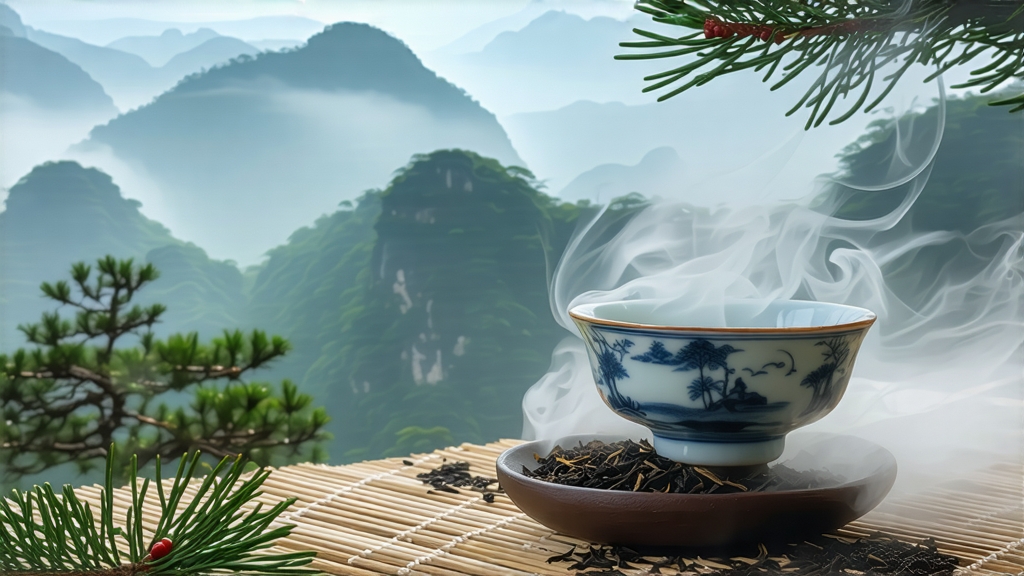
Long before English tea clippers raced across the oceans and Victorian drawing rooms echoed with the clink of bone china, a small village in the Wuyi Mountains of northern Fujian was already sending out aromatic signals that would reshape global taste. That village is Tongmu, and the tea is Lapsang Souchong—today celebrated as the first black tea ever created, the forebear of every keemun, assam, ceylon and breakfast blend now poured from Dublin to Delhi. To understand Chinese red (hong) tea is therefore to begin with Lapsang Souchong, a leaf whose story is written in camphor-scented smoke, volcanic soil and the ingenuity of Ming-dynasty farmers who turned misfortune into a new style of tea.
Historical records kept by the Jiang family in Tongmu date the birth of Lapsang Souchong to 1568, toward the end of the Jiajing era. An army unit, marching south to quell coastal pirates, commandeered the tea sheds for the night. By morning the freshly picked leaves had oxidized far beyond the intended green-tea stage. Rather than discard the crop, the farmers hastily dried the darkened leaves over fires of local Masson pine to halt further spoilage. The result was a sweet, resinous liquor unlike anything previously tasted in the tea markets of nearby Xingcun. Within two decades this “smoked small-leaf” (xiao zhong) was traveling down the Min River to the port of Quanzhou, where Dutch traders bought every chest and rechristened it “Bohea” after the local Wu-i hills. By the early 1600s Lapsang Souchong had reached Amsterdam and London, fetching prices higher than silver and inspiring the fashion for “black” tea that would soon eclipse green tea across Europe.
Strictly speaking, only leaf picked inside the 60 km² national-protection zone of Tongmu Guan can be called Zheng Shan (“Original Mountain”) Xiao Zhong. Outside that radius the same cultivar and technique yield Wai Shan Xiao Zhong, a pleasant but less complex tea. Within Tongmu elevation ranges from 600 m to 1 400 m; mist drifts through dwarf bamboo and evergreen forests, while temperature swings of 10 °C between day and night slow leaf growth and concentrate amino acids. The soil is a crumbly, slightly acidic rhyolitic tuff rich in potassium and manganese—minerals that translate into a naturally sweet, mineral finish in the cup. Four clonal variants dominate today: Cai Cha (the original mixed seedling population), Zhen Mei (a small-leaf selection prized for fragrance), Ye Bei (wild-grown arboreal bushes) and the newly registered Wuyi Qizhong 105, bred for heightened honey aroma yet still capable of absorbing pine smoke.
Plucking follows the traditional “kai mian” rule: only the bud plus the first two fully opened leaves are taken, and only when the morning dew has evaporated. A 20 kg basket of fresh leaf will ultimately yield about 5 kg of finished tea, because the bulky green leaf loses 75 % of its weight through withering, rolling, oxidizing and drying. Tongmu farmers still observe the lunar calendar, starting the spring pick on Qing Ming (around 5 April) and closing before the rains of late May, believing that summer growth carries too much coarse fiber to absorb smoke gracefully.
Withering is done in the second story of two-hundred-year-old wooden lofts called qing lou. A gentle fire of pine logs smoulders in a shallow pit below slatted bamboo trays; the rising heat and smoke simultaneously dehydrate and aromatize the leaf for 8–10 hours. This is not the aggressive “camp-fire” treatment many outsiders imagine: temperatures stay below 35 °C, and the leaf is turned every 30 minutes to ensure even exposure. Once the lamina feels leathery and the edges start to redden, workers roll the leaf by hand on rattan mats, breaking cell walls and initiating oxidation. After 3–4 hours the leaf has turned a coppery chocolate color and emits a dried-longan sweetness. At this point the mass is quickly pan-fired at 200 °C for two minutes—just enough to halt enzymatic activity while locking in maltose and linalool compounds.
The final and most iconic step is the pine-smoke drying. Freshly split Masson pine is stacked into a